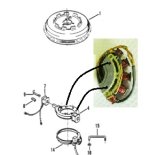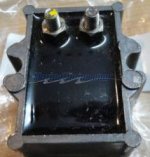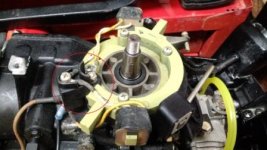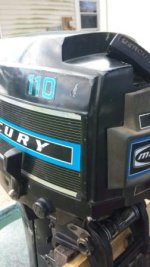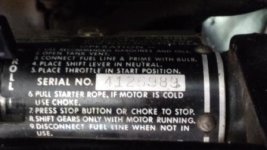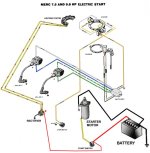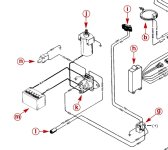Jason Robo
New member
Hey guys! So I have a 1975 Mercury 110 9.8 HP (serial 4126989)that i'm trying to install a lighting stator on and having some difficulty with doing so.
The lighting stator I have purchased is PN 74367A12.I removed the housing and flywheel last night, and reallycouldn'tfigure out where it mounts under the flywheel with the ignition stator.
Is there something Im not seeing or don'tknow about when installing this? It doesn't seam to fit under the flywheel with the ignition stator installed.
Another thought... Do I even need this part to charge my batteries and power my lights? Or do I just need to wire up the existing ignition stator to my electrical system?
Also, I am wanting to install an electric start system too, and think I have purchased the wrong starter housing for the motor.
I have already purchased numerous parts to accomplish this and its not adding up, so if you guys could tell me what the correct part numbers are, that would be a great help also.
The parts I have purchased so far:
Lighting Stator 74367A12
Starter Housing 91871A1 (which I found does not fit correctly)
CDI Voltage Regulating Rectifier 585114 193-5114
Starter motor 50-73531
Electric Start Flywheel 1 - 6105A9
Any and all help would be greatly appreciated!
Thank you!
The lighting stator I have purchased is PN 74367A12.I removed the housing and flywheel last night, and reallycouldn'tfigure out where it mounts under the flywheel with the ignition stator.
Is there something Im not seeing or don'tknow about when installing this? It doesn't seam to fit under the flywheel with the ignition stator installed.
Another thought... Do I even need this part to charge my batteries and power my lights? Or do I just need to wire up the existing ignition stator to my electrical system?
Also, I am wanting to install an electric start system too, and think I have purchased the wrong starter housing for the motor.
I have already purchased numerous parts to accomplish this and its not adding up, so if you guys could tell me what the correct part numbers are, that would be a great help also.
The parts I have purchased so far:
Lighting Stator 74367A12
Starter Housing 91871A1 (which I found does not fit correctly)
CDI Voltage Regulating Rectifier 585114 193-5114
Starter motor 50-73531
Electric Start Flywheel 1 - 6105A9
Any and all help would be greatly appreciated!
Thank you!


